The quest for youthful skin has captivated human interest for centuries, but in recent decades, dermatological science has shed light on precisely what contributes to visible skin aging and how to minimize its effects. One of the most common aesthetic concerns that signals the passage of time is the appearance of fine lines. These delicate creases—subtler than deep wrinkles—emerge as the skin begins to lose elasticity, moisture, and collagen. Though commonly associated with aging, fine lines can also result from environmental damage, lifestyle choices, and inadequate skincare. Understanding how to reduce fine lines while supporting overall skin health is not just a cosmetic pursuit but a wellness endeavor. As dermatologists increasingly emphasize, caring for the skin is an extension of caring for the self, encompassing physical health, mental well-being, and preventive care.
You may also like: How to Choose Skin Care for Fine Lines: Evidence-Based Tips for Healthier, Younger-Looking Skin
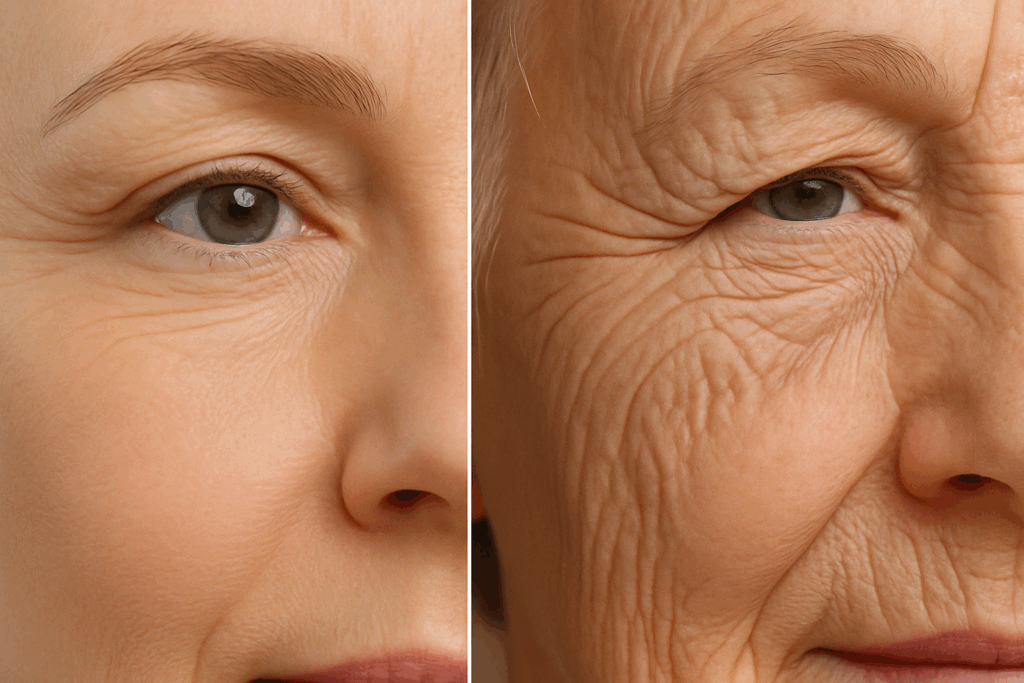
Understanding the Difference Between Fine Lines and Wrinkles
One of the most misunderstood distinctions in dermatology is the difference between fine lines and wrinkles. While these terms are often used interchangeably, recognizing the nuances can clarify which treatments and prevention strategies are most effective. Fine lines are typically shallower, emerging in areas with repetitive facial expressions, such as around the eyes, forehead, and mouth. Wrinkles, by contrast, are deeper folds that develop as skin loses its underlying structural support. In the debate of fine line vs wrinkle, dermatologists point out that early intervention with fine lines can prevent their progression into more permanent wrinkles.
Many people express concern about lines on face not wrinkles, puzzled by the subtle yet noticeable changes in their appearance. This distinction is especially important when considering preventative skincare versus corrective measures. Fine lines often respond well to lifestyle changes and non-invasive topical treatments, while wrinkles may require more intensive dermatologic procedures. By understanding the difference, individuals are better equipped to make informed decisions about how to support skin health naturally and choose treatments appropriate for their skin’s needs and stage of aging.
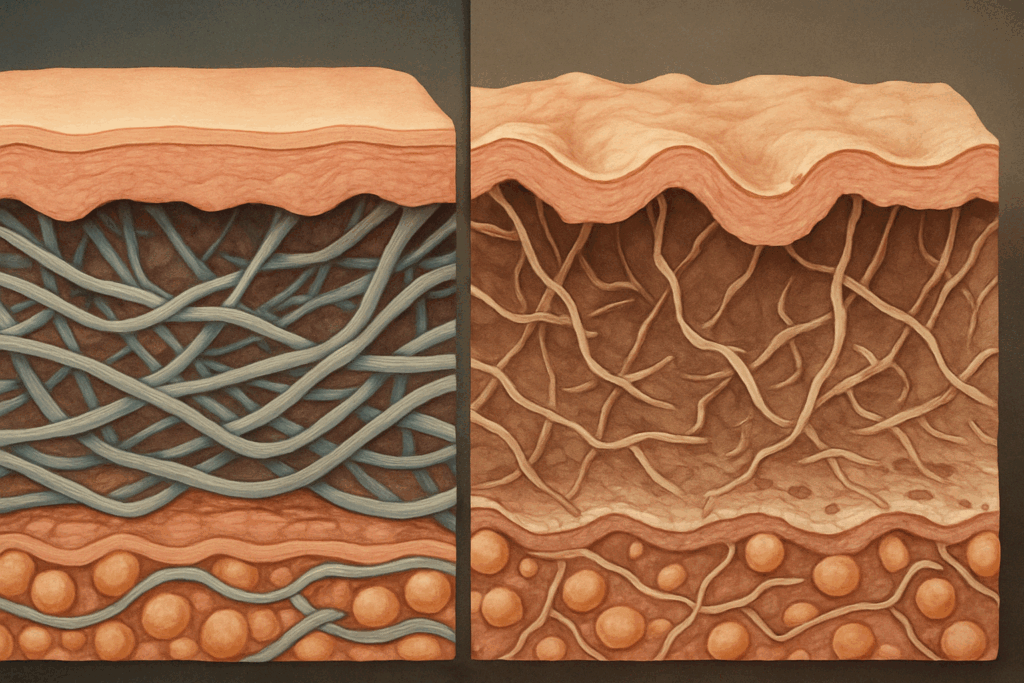
The Role of Collagen and Elastin in Skin Aging
Central to the development of both fine line and wrinkles is the gradual breakdown of collagen and elastin—two proteins responsible for skin’s firmness and elasticity. As we age, the body’s ability to produce these proteins diminishes, and the existing fibers become fragmented and less organized. This decline is exacerbated by chronic sun exposure, oxidative stress, pollution, and poor nutrition. Dermatologists frequently stress that the foundation of youthful skin lies in preserving and stimulating these structural proteins.
To reduce fine lines, it’s important to support the skin’s internal scaffolding. This begins with photoprotection, as ultraviolet radiation is one of the most significant external factors that accelerate collagen degradation. Broad-spectrum sunscreens, especially those containing zinc oxide or titanium dioxide, are considered essential by skin health professionals. Antioxidants like vitamin C, green tea polyphenols, and niacinamide also play a vital role in neutralizing free radicals that damage collagen-producing fibroblasts. Moreover, dietary choices rich in amino acids, omega-3 fatty acids, and micronutrients can supply the skin with the necessary building blocks for repair and resilience.
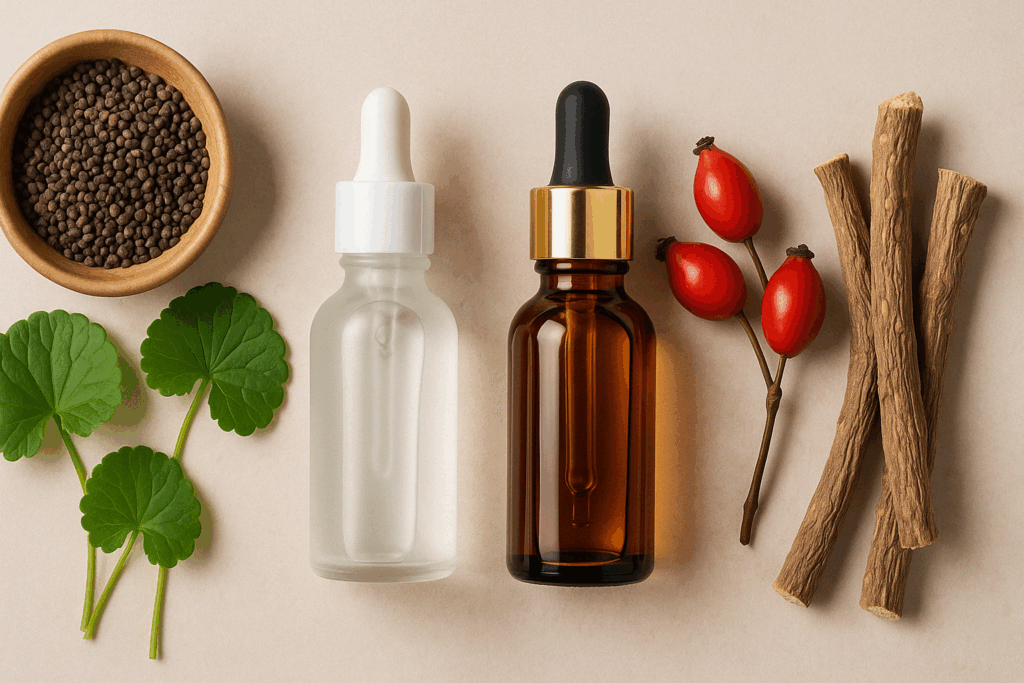
Natural Ingredients That Dermatologists Recommend for Fine Lines
Over-the-counter skincare is often the first line of defense for individuals seeking to minimize signs of aging. However, not all products are created equal, and natural ingredients with proven efficacy are especially valued for their safety profiles and long-term benefits. Among the most dermatologist-recommended ingredients is retinol—a vitamin A derivative that stimulates cell turnover and collagen production. While traditionally considered a pharmaceutical agent, gentler plant-based alternatives such as bakuchiol offer similar benefits with fewer side effects for those with sensitive skin.
Hyaluronic acid, another powerhouse ingredient, is celebrated for its ability to retain water and plump the skin from within. By improving skin hydration, it can visibly soften fine lines and enhance the skin’s overall texture. Botanical extracts like licorice root, centella asiatica, and rosehip oil provide antioxidant protection and promote barrier repair, both critical for reducing fine lines over time. Importantly, dermatologists recommend layering products thoughtfully to avoid irritation and maximize absorption, encouraging a simplified but consistent skincare regimen.

Lifestyle Factors That Influence Fine Lines
Beyond topical treatments, lifestyle plays a profound role in the development and prevention of fine lines. Smoking, for example, accelerates skin aging by introducing toxins that constrict blood vessels, impair collagen synthesis, and dehydrate the skin. Chronic stress also takes a toll on skin health, increasing cortisol levels that contribute to inflammation and barrier disruption. In contrast, mindfulness practices, regular physical activity, and restorative sleep can improve circulation, promote detoxification, and facilitate skin repair.
Hydration, both internal and external, is a cornerstone of healthy skin. Drinking adequate water throughout the day maintains skin turgor and supports cellular processes involved in tissue regeneration. Moreover, environmental humidity and the use of hydrating skincare can further prevent transepidermal water loss. Nutrition is another key factor. Diets rich in fruits, vegetables, whole grains, and healthy fats are associated with a reduced incidence of fine line and wrinkles. Omega-3 fatty acids, in particular, help preserve the skin’s lipid barrier, which is essential for retaining moisture and preventing irritation that can lead to premature aging.
The Psychological Impact of Fine Lines and Aging Skin
While the physical manifestations of aging are often discussed, the psychological effects deserve equal attention. Many individuals report a decline in self-confidence as fine lines begin to appear, interpreting them as visible markers of aging, fatigue, or diminished vitality. For some, these changes can trigger feelings of insecurity or anxiety, particularly in image-driven cultures or professions. Dermatologists and mental health professionals alike acknowledge the strong mind-skin connection and advocate for an integrated approach to skincare that includes emotional well-being.
Promoting a positive self-image is crucial when discussing lines on face not wrinkles. These subtle signs of aging can serve as reminders of experience, resilience, and personal history rather than mere flaws. Reframing one’s perception of aging skin from a deficit to a testament of life’s journey can reduce distress and improve quality of life. Moreover, engaging in proactive skin health routines can foster a sense of control and empowerment, reinforcing positive mental states that benefit both skin and spirit.
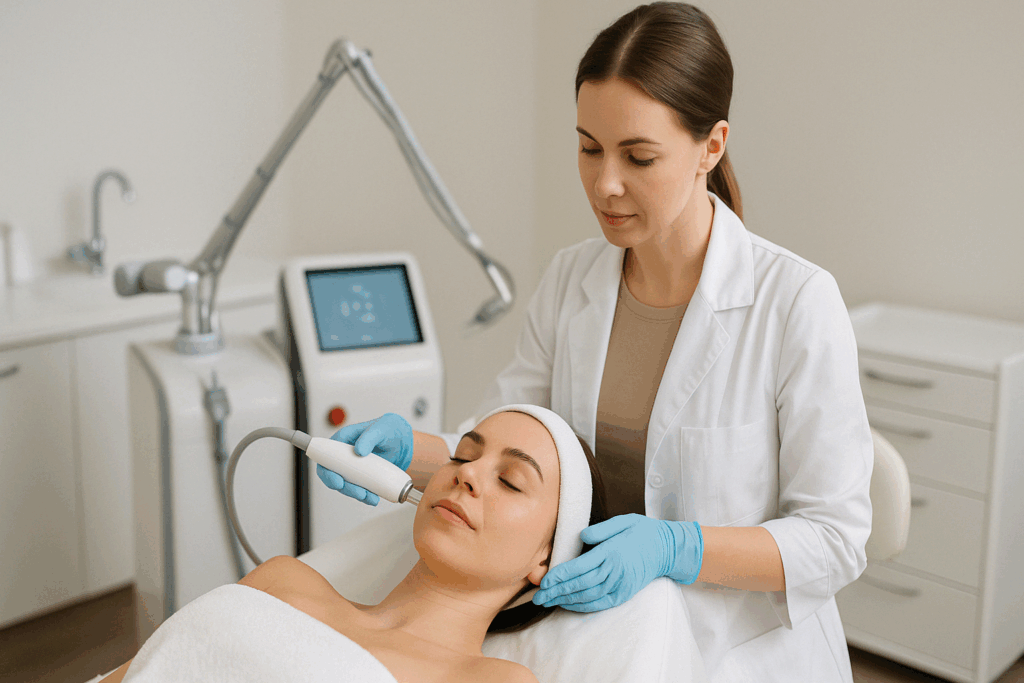
Professional Dermatological Treatments to Complement Natural Care
While natural and preventive approaches form the foundation of skin aging management, dermatologists often recommend clinical treatments for individuals seeking more dramatic results. Options like microdermabrasion, chemical peels, microneedling, and laser therapy are designed to stimulate collagen production and resurface the skin. These minimally invasive techniques can significantly reduce fine lines without the risks associated with surgery or more aggressive interventions.
Injectables, such as hyaluronic acid fillers or neuromodulators like botulinum toxin, offer targeted solutions for specific areas prone to expression lines. However, their use should always be guided by a qualified professional who prioritizes natural outcomes and skin health over overcorrection. Dermatologists emphasize that these procedures are most effective when used in conjunction with a solid at-home skincare regimen and healthy lifestyle choices. When integrated mindfully, professional treatments can enhance the skin’s natural repair processes and provide individuals with visible yet subtle rejuvenation.
Balancing Prevention and Acceptance in Skin Aging
Aging is an inevitable biological process, but the way we experience and perceive it is largely shaped by societal norms and personal values. In the conversation about fine line vs wrinkle, there is a growing recognition that perfection is neither attainable nor necessary. Dermatologists today often speak not just of correction but of enhancement—supporting the skin’s inherent beauty rather than masking its character. This shift toward authenticity reflects a broader wellness movement that celebrates health, function, and self-expression over unrealistic ideals.
Preventing fine lines does not mean fearing them. Rather, it involves making informed choices that reflect both science and self-care. Adopting sun protection, nourishing the skin with effective natural ingredients, staying hydrated, and maintaining emotional balance are all acts of kindness toward oneself. They are not about denying age but about aging with intention. Through this lens, each line becomes a gentle echo of a life lived with depth and emotion.
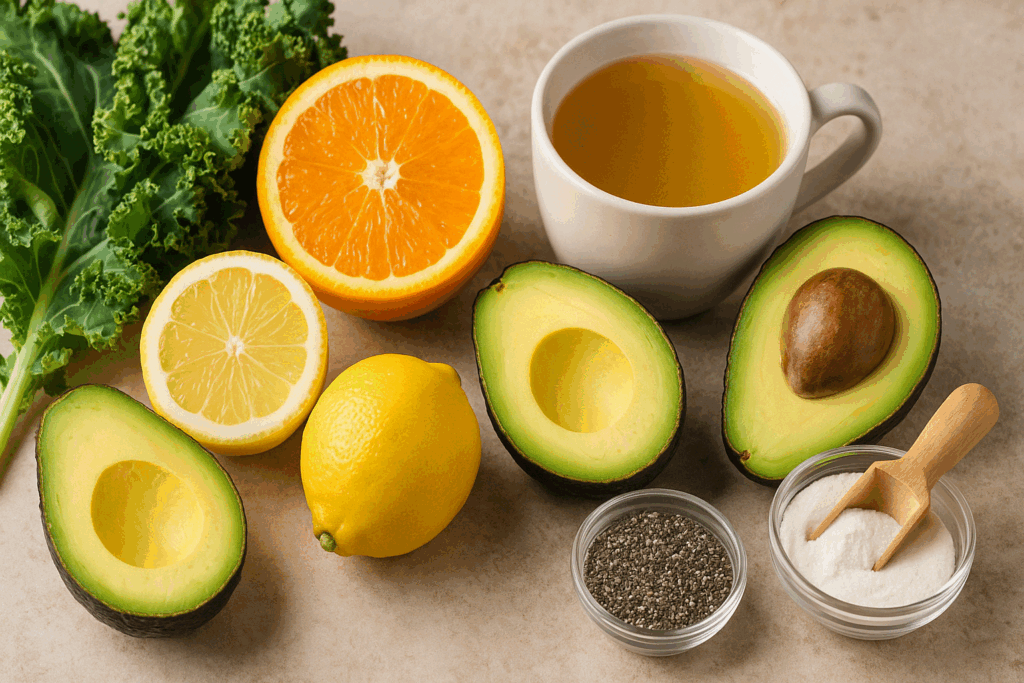
Key Nutrients for Natural Skin Support
Nutrition plays a central role in skin integrity and resilience, offering a potent means to reduce fine lines and enhance overall skin tone and texture. Vitamins A, C, and E are among the most researched nutrients for skin aging. Vitamin A supports cell turnover and collagen synthesis, while vitamin C stabilizes collagen fibers and protects against photodamage. Vitamin E acts as a lipid-soluble antioxidant that helps maintain skin hydration and elasticity.
Minerals such as zinc and selenium also contribute to skin health by facilitating enzymatic processes and immune responses that protect against oxidative stress and inflammation. Collagen supplements, often derived from marine or bovine sources, have gained popularity for their potential to improve skin elasticity and reduce the appearance of fine line and wrinkles when consumed regularly over several months. However, whole food sources such as bone broth, leafy greens, citrus fruits, and seeds remain vital for delivering a broad spectrum of nutrients that nourish the skin from within.
Plant-based diets, rich in phytonutrients and fiber, have shown promise in supporting a healthy microbiome—a key player in the skin-gut connection. Emerging research suggests that gut health may influence inflammatory processes in the skin, including those involved in premature aging. Thus, reducing fine lines naturally may also depend on maintaining digestive health through probiotic-rich foods, prebiotic fibers, and minimal consumption of ultra-processed products.
Maintaining Long-Term Results Through Daily Habits
One of the most overlooked aspects of skin care is consistency. While dramatic improvements can be achieved through certain interventions, long-term results are sustained by daily habits. Cleansing the skin gently but thoroughly each night removes environmental pollutants and residual cosmetics that can contribute to oxidative damage. Moisturizing twice daily with products suited to one’s skin type helps reinforce the barrier function and improve hydration.
Sun protection remains a non-negotiable element of any anti-aging routine. Applying broad-spectrum sunscreen every morning—even on cloudy days or when indoors near windows—prevents cumulative UV damage that accelerates both fine line and wrinkle formation. Additionally, practicing mindful facial expressions and avoiding unnecessary squinting or frowning can minimize the development of expression lines over time.
Regular skin check-ins with a dermatologist provide an opportunity to assess progress, adjust routines, and catch any early signs of concern. These visits are not just for acute issues but serve as a proactive approach to skin wellness. By prioritizing prevention and remaining attuned to the skin’s evolving needs, individuals can extend the youthful qualities of their complexion naturally and gracefully.
Frequently Asked Questions: Reducing Fine Lines and Supporting Natural Skin Health
What are some innovative skincare technologies that target fine lines more precisely than traditional creams?
Recent advancements in skincare have introduced microencapsulation technology, which allows active ingredients like peptides and retinoids to be delivered deep into the skin with greater precision. This enhances absorption while minimizing irritation, especially in sensitive areas where fine lines tend to form. Additionally, low-frequency ultrasound and nanotechnology are being explored to help disrupt the skin barrier gently, making treatments for fine lines more effective without invasive procedures. These newer delivery systems are showing promise in addressing both fine line and wrinkles with increased accuracy and sustained release. While not a replacement for healthy skin habits, such technologies offer a scientific edge for targeting lines on face not wrinkles with improved consistency.
How does climate and air quality affect the appearance of fine lines over time?
Environmental exposure plays a more significant role in skin aging than many people realize. Dry climates can dehydrate the outer skin layer, accentuating fine lines and making the skin appear rough or uneven. Conversely, high pollution levels can introduce oxidative stress that breaks down collagen and contributes to both fine lines and wrinkles. Those living in urban areas often report earlier onset of fine lines compared to those in rural or coastal climates. Proactively managing skin exposure to harsh environmental conditions can help slow the emergence of lines on face not wrinkles, especially when paired with a strong antioxidant skincare regimen.
Can facial massage or lymphatic drainage reduce fine lines naturally?
Yes, facial massage—particularly techniques that stimulate lymphatic drainage—can promote circulation and detoxification, which helps reduce puffiness and improve skin tone. When performed consistently, massage can support the natural delivery of oxygen and nutrients to the skin, which in turn softens the appearance of fine lines. While it may not eliminate fine line and wrinkles, massage encourages skin elasticity and provides a non-invasive, calming ritual that enhances overall skin vitality. Tools like gua sha stones and facial rollers are increasingly popular and, when used correctly, can provide temporary improvement in lines on face not wrinkles. The key lies in frequency and gentle technique rather than aggressive pressure.
How do hormonal fluctuations across the lifespan influence fine lines in women?
Hormonal changes, particularly during menopause, have a significant impact on skin integrity. Estrogen plays a crucial role in maintaining collagen and moisture levels, and its decline can lead to increased skin thinning and reduced elasticity. Many women notice a sudden appearance of fine lines during perimenopause, often around the mouth and eyes. Hormone-related shifts also affect skin barrier function, making the skin more susceptible to environmental stress and worsening the contrast between fine line vs wrinkle. While hormone replacement therapy may help in some cases, dermatologists recommend focusing on topical hydration and barrier-repair treatments tailored to hormonal skin.
Are there specific nighttime skincare routines that help reduce fine lines more effectively than morning routines?
Yes, nighttime is when the skin enters its most active repair phase, making evening routines essential for targeting fine lines. Retinoids and peptides are better tolerated and more effective when applied at night due to reduced sun exposure and the body’s circadian rhythm supporting skin regeneration. Incorporating a double cleanse, followed by a hydrating serum and a barrier-protecting moisturizer, creates the ideal environment for reducing fine line and wrinkles. Furthermore, overnight masks and sleeping creams provide prolonged hydration, which helps smooth lines on face not wrinkles more visibly by morning. Skipping nighttime care often accelerates skin dehydration, contributing to long-term line formation.
How do psychological stress and emotional health influence the development of fine lines?
Chronic psychological stress increases cortisol levels, which in turn promotes inflammation and impairs collagen synthesis. This accelerates the development of fine lines, particularly in expressive zones like the forehead and eyes. Individuals under persistent emotional strain may also engage in repetitive facial expressions that etch fine lines deeper over time. Beyond the biological effects, emotional distress can reduce adherence to skincare routines, exacerbating the appearance of fine line and wrinkles. Holistic skin care should address not just surface treatments but also emotional well-being, recognizing that mental calm contributes significantly to reducing lines on face not wrinkles.
What role does sleep quality play in the long-term appearance of fine lines?
Sleep is the body’s most potent time for cellular repair, including skin regeneration. Poor sleep habits have been associated with accelerated skin aging, with studies showing increased transepidermal water loss and diminished barrier function in sleep-deprived individuals. Those who consistently get high-quality sleep show fewer visible fine lines, improved elasticity, and healthier complexions. In the fine line vs wrinkle conversation, sleep acts as a buffer that prevents early-stage lines from deepening into permanent creases. Silk pillowcases and back-sleeping positions can further reduce sleep-induced compression lines, particularly for side and stomach sleepers.
Are there any cultural or historical perspectives on fine lines that shape how we view them today?
Throughout history, the interpretation of facial lines has varied widely. In some Eastern philosophies, fine lines are read symbolically—indicating wisdom, life experiences, or even energetic imbalances in the body. By contrast, modern Western aesthetics have historically stigmatized aging signs, promoting the erasure of every fine line and wrinkle. Today, a cultural shift is occurring toward embracing age with grace, and this includes a more nuanced appreciation of lines on face not wrinkles as markers of a life lived authentically. Understanding these perspectives can empower individuals to make skincare decisions rooted in values rather than societal pressure, redefining the fine line vs wrinkle narrative as one of empowerment rather than concealment.
How can exercise routines be adapted to support skin health and reduce fine lines?
Physical activity improves circulation, which delivers oxygen and nutrients to skin cells, enhancing their ability to repair damage and regenerate collagen. Cardiovascular exercises are particularly beneficial for promoting dermal blood flow, helping the skin stay supple and hydrated. However, high-impact sports that involve excessive facial strain or outdoor exposure without sun protection can contribute to fine line and wrinkles. Gentle movement practices like yoga and tai chi not only reduce stress hormones but also improve posture and breathing, indirectly reducing tension-related lines on face not wrinkles. A balanced exercise routine should consider both skin protection and systemic benefits for graceful aging.
What are some lesser-known dietary factors that influence the development of fine lines?
Beyond well-known nutrients like vitamin C and collagen peptides, emerging research highlights the role of advanced glycation end products (AGEs) in skin aging. These compounds form when sugar reacts with proteins, leading to stiffened collagen fibers and an increased appearance of fine lines. Diets high in processed foods and sugars can accelerate this process, while cooking methods like steaming or boiling reduce AGE formation. Hydrophilic foods like cucumbers, chia seeds, and berries help maintain skin hydration from within and counteract the dehydration that accentuates fine line and wrinkles. A nutrient-dense, anti-inflammatory diet offers subtle but meaningful protection against the progression of lines on face not wrinkles over time.
Rediscovering Beauty in the Process of Aging Gracefully
In a culture that often prioritizes youth over wisdom, the desire to reduce fine lines can feel like a battle against time. Yet, when approached through the lens of self-care rather than self-correction, the process becomes one of empowerment. Fine lines are not simply flaws to erase but reflections of a life rich in expression, laughter, thought, and experience. They are the soft signatures of a person who has lived with presence and passion.
Dermatologists emphasize that skin health is not achieved through quick fixes but through sustained, holistic practices that honor the body’s natural rhythms. Supporting collagen, maintaining hydration, eating well, protecting against environmental stressors, and nurturing emotional resilience all contribute to radiant skin that reflects overall vitality.
Ultimately, addressing lines on face not wrinkles is about understanding their origin and evolution. It’s about caring for the skin as an organ deserving of respect and attention—not just for aesthetics but for its vital role in human health. Through mindful choices and a compassionate outlook, individuals can embrace aging as a process of becoming—not diminishing. By aligning natural strategies with expert dermatological guidance, it is entirely possible to age not just gracefully, but vibrantly, with every line telling a beautiful part of the story.
Was this article helpful? Don’t let it stop with you. Share it right now with someone who needs to see it—whether it’s a friend, a colleague, or your whole network. And if staying ahead on this topic matters to you, subscribe to this publication for the most up-to-date information. You’ll get the latest insights delivered straight to you—no searching, no missing out.
Further Reading:
Skin Care and Aging – National Institute on Aging
Home Remedies for Wrinkles: Face Masks, Oils, Massage
Wrinkle creams: Your guide to younger looking skin
Disclaimer
The information contained in this article is provided for general informational purposes only and is not intended to serve as medical, legal, or professional advice. While Health11News strives to present accurate, up-to-date, and reliable content, no warranty or guarantee, expressed or implied, is made regarding the completeness, accuracy, or adequacy of the information provided. Readers are strongly advised to seek the guidance of a qualified healthcare provider or other relevant professionals before acting on any information contained in this article. Health11News, its authors, editors, and contributors expressly disclaim any liability for any damages, losses, or consequences arising directly or indirectly from the use, interpretation, or reliance on any information presented herein. The views and opinions expressed in this article are those of the author(s) and do not necessarily reflect the official policies or positions of Health11News.